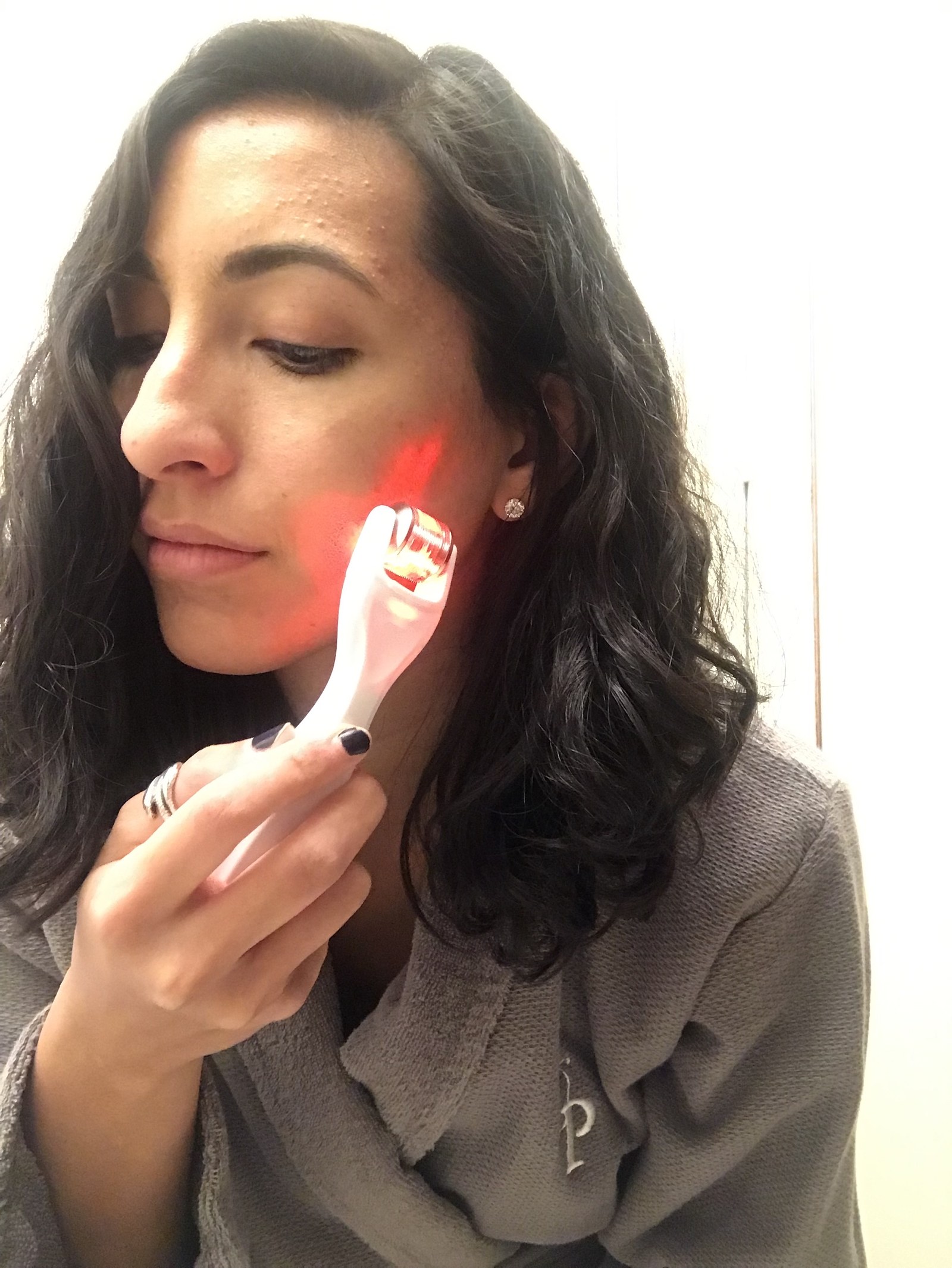I Tried Microneedling at Home, and It Transformed My Skin

The first time I witnessed the magic of microneedling, I sat in a room at a dermatologist’s office, holding my sister’s iced tea and watching her face bleed. (She’d gotten enough topical anesthesia to numb an elephant—don’t worry.) But the results were worth it: Her skin was glowing and clear just in time for her wedding.
So when NYC dermatologist Dendy Engelman, M.D., recommended at-home microneedling as a possible solution for acne scars, I was intrigued. I could do this? On my couch? While watching the final episodes of The Unbreakable Kimmy Schmidt? I couldn’t sign up fast enough, having recently endured a months-long breakout that’s left my skin blotchy and uneven.
“Microneedling is the creation of small micro-channels and injuries to your skin with acupuncture-size needles down to various depths, depending on how deep the needles are set at,” says Melissa Kanchanapoomi Levin, M.D., a dermatologist at Entière Dermatology in New York City. “By creating these micro-injuries to your skin, your body will respond naturally by stimulating and producing collagen, which can treat fine lines and wrinkles, enlarged pores, stretch marks, acne scars, and textural concerns.”
But all of that payoff is the work of in-office microneedling, which, like my sister’s experience, requires a licensed aesthetician or dermatologist as well as good layer of anesthesia, depending on your pain tolerance. Still, though microneedling at home won’t nab you the same results nor any to the same extent (as the needles are both shorter and duller), it can still offer benefits. “At-home rollers don’t pierce your skin as deeply as the medical-grade devices, but they can be used to enhance penetration of products—be it hydrating, brightening, or rejuvenating actives—that are applied postperforation as it creates these open channels,” says Dr. Engelman.
I went with the BeautyBio GloPRO Microneedling Facial Regeneration Tool ($199), which seems like a steep price until you consider that (a) the average cost of a single microneedling session is $625, and (b) most of these tools will cost you three figures. Then I plugged in the roller, which has a built-in LED red light to further address wrinkles and scars, and let it juice up for an hour. Jamie O’Banion, the CEO and founder of BeautyBio, suggests using it after cleansing and swabbing your skin with a cleansing wipe. “Make it part of your nightly routine: Cleanse, prep, roll, treat, and complete,” she says. “Ensure all your face and eye makeup is removed, then prep by swiping a Prep Pad across target treatment areas.” These pads, a few of which are included with the microneedling roller, are alcohol-free and contain an antibacterial complex to kill any germs lingering on your skin.
I accidentally started without reading the directions (old habits die hard), but the good news? It’s pretty foolproof. Unlike devices that work on a timer, the microneedle roller turns on and off the old-fashioned way—that is, with a button. So I had no idea how long I was rolling it around certain sections of my face and still didn’t experience any redness or irritation. (I now know that you’re supposed to roll each area for 15 seconds.) I began with my chin, moved up to either cheek, and finished with my forehead. You’re supposed to roll over each area in a pattern. “Go over the area in an asterisk: up and down, side to side, diagonally left up to right, and diagonally right up to left,” says Dr. Engelman.
The microneedling itself was fine: You can feel pricks, but it wasn’t painful. Then, because I’m a glutton for punishment, I topped it with some glycolic acid. Reader, it hurt. Fortunately, it subsided pretty quickly, and I followed up with my usual antioxidant serum and lightweight moisturizer. The next morning I awoke to find that the dark spots on one cheek looked diffused—and while it seems counterintuitive, some redness had dissipated from my problem areas. My skin looked a little calmer and noticeably brighter.
